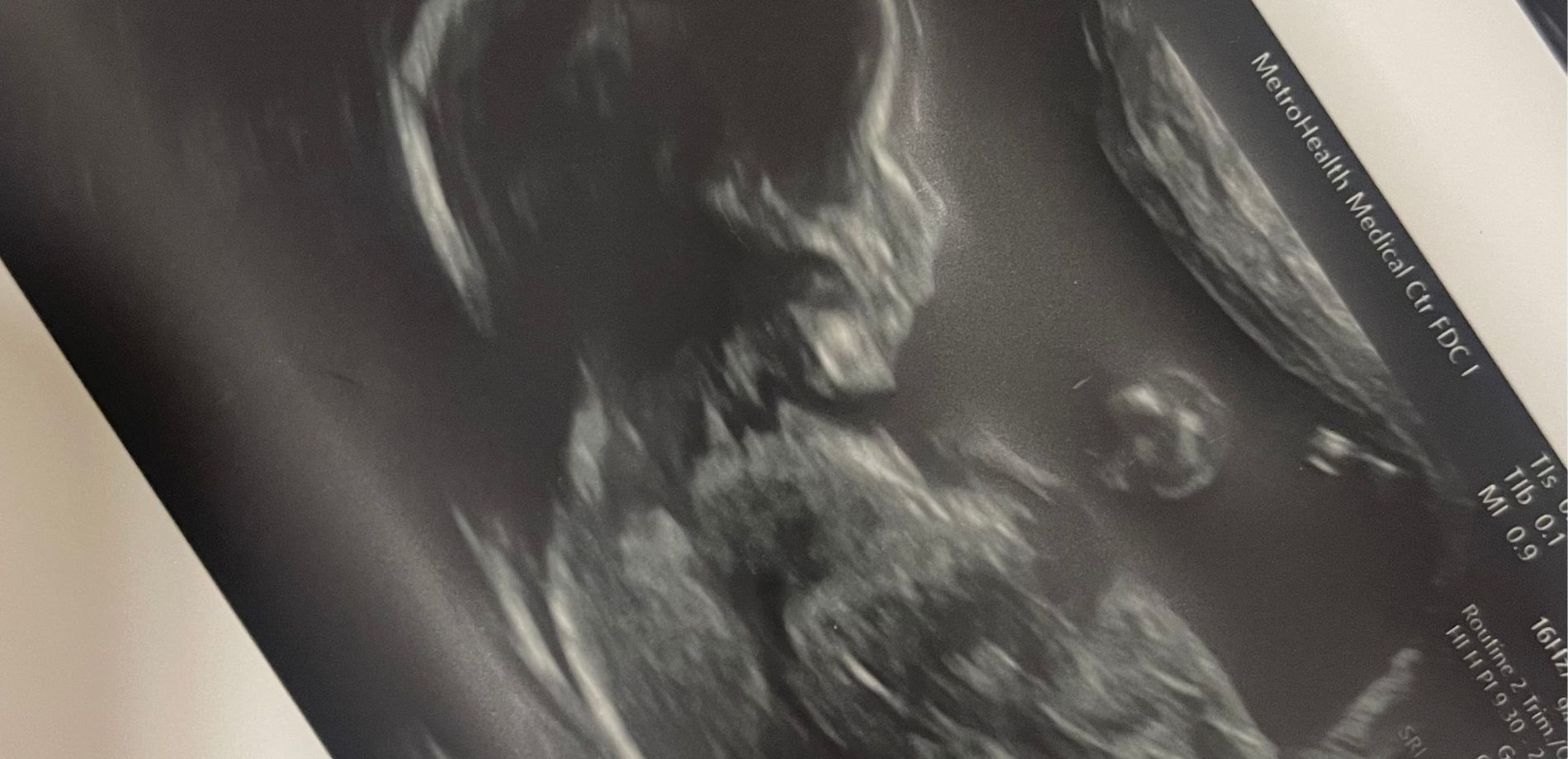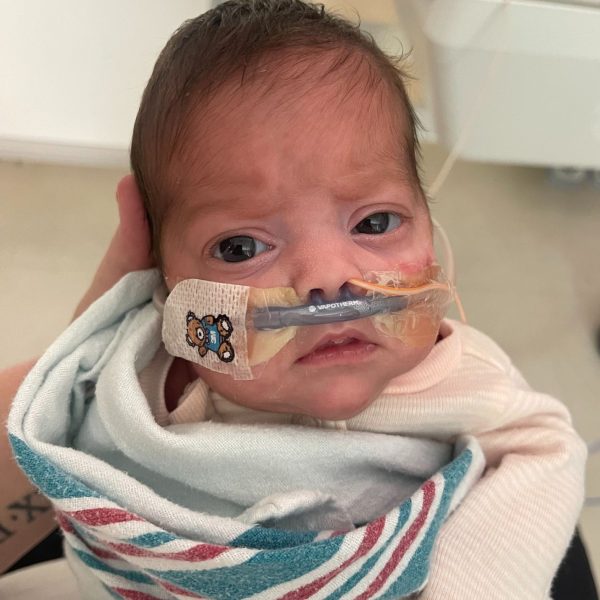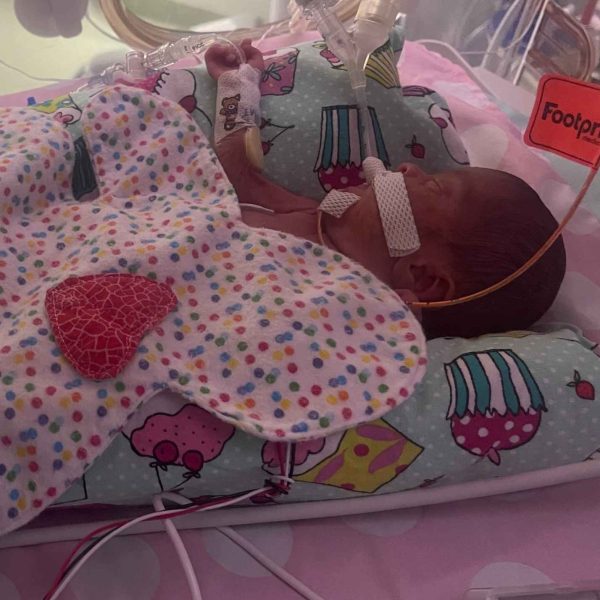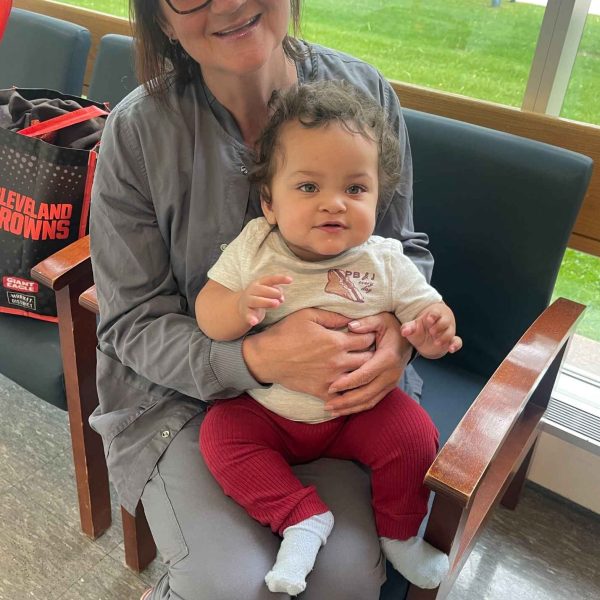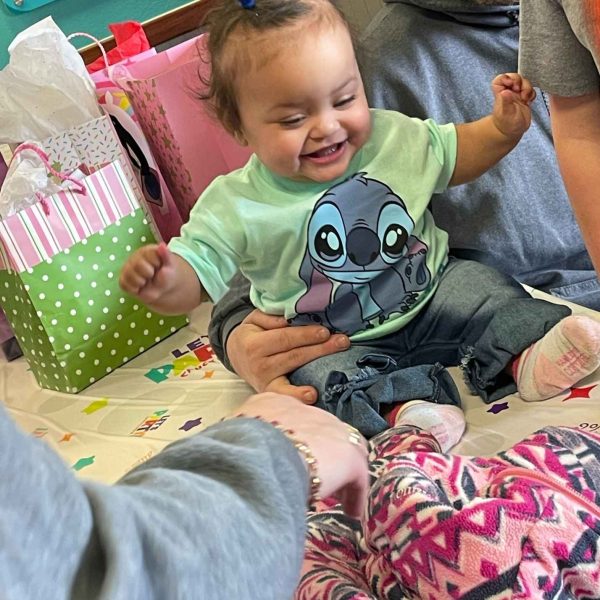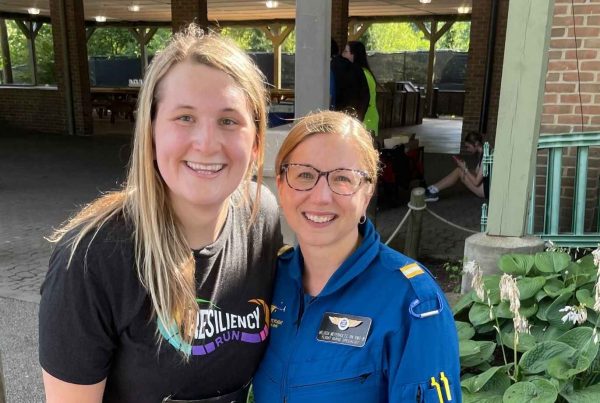“The staff was so great…they were always so comforting and knew exactly what to say.”
A couple weeks before Christmas 2016, Mary Wilkins gave birth to her first daughter, Scarlett. Another daughter, Violet, followed in March 2023. She arrived six weeks early.
By then, Mary had been working at MetroHealth for five years as a licensed practical nurse and had transferred from OBC to Brooklyn Health Center.
In early August 2023, Mary and her husband Antonio found out that she was pregnant again. Because of her health history, including a pregnancy loss in 2008 and preeclampsia and gestational diabetes while pregnant with Violet, Mary would once again be under the watchful eye of Kelly S. Gibson, MD, MetroHealth’s Division Director of Maternal Fetal Medicine, and the high-risk OB team.
Dr. Gibson also scheduled a cervical cerclage, a stitch that reinforces the cervix cerclage, at 14 weeks. But at week 12, Mary started bleeding heavily. She went to the Emergency Department. Tests showed a subchorionic hematoma; blood was present near the placenta and under the membranes.
The condition raises the risk of an early delivery or pregnancy loss, so Dr. Gibson kept a close eye on Mary’s progress. The next 10 weeks were filled with check-ups and ultrasounds.
Things were going well until December 2023. At 22 weeks, Mary felt gushes of water. Another trip to the Emergency Department included an ultrasound that revealed Mary was carrying a girl.
Shortly before Christmas, Mary was back at MetroHealth. Emily E. Biehl, DNP, APRN-CNP, a high-risk OB-GYN nurse practitioner, was covering for Dr. Gibson. She ordered a test in the clinic that showed the presence of amniotic fluid.
Concerned that Mary’s amniotic sac broke prematurely, Biehl sent Mary to Labor and Delivery as a precaution. OB-GYN Clodagh Mullen, MD, one of Mary’s coworkers at the Brooklyn Health Center, sent her home after several hours of observation. She told Mary to stay close to the hospital.
On New Year’s Eve, approaching midnight, Mary started bleeding. Dr. Mullen told her to come in.
Mary – already 4 cm dilated – was admitted. Four days later, on January 5, 2024, Mary was rushed to the operating room for an emergency C-section. She had started losing a lot of blood.
At 2:30 a.m., Baby London was born, weighing 1 lb., 12 oz. She arrived 15 weeks early, delivered by Deborah Prinz, MD.
At 11:30 a.m., Antonio brought Mary to the NICU. He had warned her how tiny London was. “She fit in the palm of my hand, and she had a lot of tubes – six IV’s going on,” Mary said.
Within the first week, London had complications with blood pressure and blood loss and needed a transfusion.
London developed patent ductus arteriosus (PDA), a heart defect that can develop soon after birth. It affects the way blood flows through a baby’s lungs. Her holes never closed – they got bigger – and on January 25, she had a procedure at University Hospitals Rainbow Babies & Children’s Hospital to block the flow of fluid.
The next day, London – now 2 lbs. – was transported back to MetroHealth.
It wasn’t until London was extubated in early February that Mary and her husband were able to start holding her more.
London stayed in the NICU for three months. During that time, a host of people cared for London. They included pediatrician Deepak Kumar, MD; neonatologist Timur Azhibekov, MD; and NICU nurses Michaela Berglund, RN and Nicole Mosseau, RN/NP.
“The staff was so great,” Mary said. “They were always so comforting and knew exactly what to say. It was nice to have the same people looking after her all the time.”
On April 9 – two days before Mary’s original due date – London went home weighing 6 lbs.
Since then, her personality has emerged, bringing with it “a really good positive aura around her,” Mary says. “She’s a lovable person, smiles constantly. She’s a people person.”
Even before London left the NICU, she started physical and occupational therapy with several therapists, including Tausha Bowers, Melissa Kozub and Jessica Carter. It was mostly hand and neck massages, stretching London’s muscles so she wouldn’t tense up, and working on feeding. Her lungs were undeveloped so sucking, swallowing and breathing were difficult.
London has weekly outpatient physical and occupational therapy sessions with Laura Redman and Tina Davis. She’s reached major milestones like rolling, getting on her hands and knees, sitting up for play, grabbing her feet and holding her toys for play. Working on fine motor and sensory skills is helping with improved feeding.
London’s care team also includes ophthalmologist Maryo Kohen, MD; cardiologist John Lozier, MD, pediatricians Sarah E. Bement, MD, (another coworker) and Swati Patel, MD.
“London has an AMAZING team that surrounds her, and we are truly grateful for them as a whole,” Mary said.
For London’s first birthday, the family took a weekend trip. A combined birthday party to celebrate London and older sister Violet was held in March.
“With all the complications Mary had, it’s really refreshing to have the takeaway message of her experience as a MetroHealth patient to be how much the team rallied around her and her family, and she felt that support,” Dr. Gibson said. “I think that is a very powerful message.”
Do you want to help patients like Mary and London? The MetroHealth Foundation is making a difference every day. Learn more or give at metrohealth.org/foundation.

